Initiate, Transform, Sustain, Reach Out
Post Natyam Collective Members Reflect on Long-Distance Collaboration
The Post Natyam Collective is a grassroots, web-based coalition of women dance artists and scholars who critically and creatively engage with South Asian dance. Our members are: Sandra Chatterjee (Munich/Salzburg/New Delhi), Shyamala Moorty (Los Angeles), Cynthia Ling Lee (Los Angeles), and Anjali Tata (Kansas City), with Sangita Shresthova (Los Angeles/Prague) as an affiliated multimedia choreographer). Largely unfunded, we rely on the resourceful use of free internet technologies to collaborate across distance.
You might wonder what Post Natyam means. Half English, half Sanskrit, half critical theory, half classical treatise, “post” is, among other possibilities, postmodern, postcolonial, and the cyber post, while “natyam” refers to the interdisciplinary conjunction of drama, dance, and music in Indian performance tradition.
I. Initiate: Contemporary South Asian Choreographic Collaboration
Sandra: Shyamala, Anjali, and I launched the collective formally in 2004, after we had already collaborated with each other in different combinations for some time. Cynthia joined in 2008. As a group of choreographer-scholars we are invested in contemporary, critical South Asian dance aesthetics – a niche interest in the field of contemporary dance. While all of us attended graduate school at the University of California in Los Angeles (not all simultaneously), the collective gradually dispersed geographically after we graduated.
Cynthia: The Post Natyam Collective members continued their artistic connection despite the distance. Why? Because the politico-artistic values that we hold dear are marginal to mainstream dance cultures in our home communities. Contemporary South Asian choreographers in Germany and the US are rare – and those whose work engages politically with postcolonial, queer, and feminist-of-color theory are even rarer. Moreover, we are committed to collaboration, embracing the collective as an organizational structure over the “standard” model of a dance company with a single artistic director. Collaborating allows us to connect while honoring our differing politico-aesthetic approaches. We have resisted developing a signature fusion vocabulary to brand our work, instead finding multiple ways to engage with our individual perspectives, the diversity of the movement traditions that we practice, and our migrations to varied performance contexts and geographical locations.
Sandra: However, the new situation of increasingly permanent geographic dispersal, combined with a continued lack of funding, family responsibilities and, for some of us, creative isolation, brought our creative collaborations to a standstill. We continued to work together administratively, planning projects and fundraising but without managing to collaborate artistically.
II. Transform: Virtual Teamwork
Sandra: In 2008–2009, I was doing a course in “Kultur und Organisation” (“Culture and Organisation”) at Institut für Kulturkonzepte at the University of Vienna. As part of this course, Post Natyam went through an organisational restructuring process to rethink the structure of our collective, seeking to make administrative collaboration more efficient so as to facilitate art making.
Cynthia: When I joined the collective in early 2008, there were established methods of administrative collaboration, such as sharing documents online and holding meetings via Skype. However, the collective still relied on in-person artistic collaborations when life circumstances allowed them to be in the same city. Impatient to start creative work and inspired by Remy Charlip’s airmail dances, I suggested that we give each other choreographic assignments via email. The collective decided to try collaborating creatively online using many of the same free internet technologies that we already used administratively.
Sandra: So, between 2008 and 2009, following creative impulses from the newest collective member, Cynthia, along with the organisational restructuring, our process transitioned into a structured, internet-based, long-distance creative process. This shift initiated creative collaboration again and enabled artistic work to take place, but it also affected our overall work in unforeseen ways.
Our choreographic process no longer focused on an end product – a joint performance. Instead it changed into an open process of creating material around a chosen theme through a facilitated assignment process, where we take turns giving each other assignments, uploading them to our blog, and giving feedback. We began transforming each other’s material into multiple manifestations based on the same material, instead of working towards one common end product.
Cynthia: We adopted an “open source” policy within the collective, through which we encourage each other to steal, recycle, and translate each other’s material. To illustrate how this works, here is one series of choreographic transformations that unfurled from our long-distance assignment process. It resulted in multiple artistic products in radically different media, authored by different people, and presented in varied contexts.
A poem…
… that is part of Cynthia’s artbook, Harassing the Sanskrit Heroine, was exhibited at the art installation, Trace, as part of the Instruments of Risk series at Sea and Space Explorations Gallery, Los Angeles CA in November 2009. The poem ]wrist[ is loosely inspired by Kahe Rukata, a traditional thumri (light classical Hindustani song-form) attributed to Bindadin Maharaj.
]wrist[
a delicate bandage a bone a twiggy little snap. oh slim white stab of a waist unwrapped. blackened sweet. a virgin chocolate bar crinkles her glittery skirt but such a disapproving purse. disapproving she twists her bittermelon mouth splitting shut. oh. oh oh no. white hot mirchi stops dead in her tracks. cut red. a rough and ready grab, a wolf whistling fist, an iron bangle tapping her curved rear.
…becomes a dance film…
… by Anjali Tata that was screened at the lecture-demonstration, Post Natyam Unveiled as part of the Khmer Arts Salon Series at the Khmer Arts Academy, Long Beach CA, 5/10 and with live tabla accompaniment at Moving Beyond Form, Asian Arts Initiative, Philadelphia PA, 2/10.
…which is projected on a live performer’s body…
… as part of the live dance piece, Ranri (widow/courtesan) (solo version), choreographed and performed by Shyamala Moorty as part of DISHA at the Rabindranath Tagore Centre, Indian Council for Cultural Relations, Kolkata, India, 8/10.
… and whose choreography performed as a live video feed
… in The Thorn, the Leaf, and the Butterfly, choreographed by Shyamala Moorty with Cynthia Ling Lee and Anjali Tata, performed at universities and theaters throughout the US, including the National Asian American Theater Festival, Los Angeles CA (6/11) and University of Wisconsin-Madison (4/11).
Cynthia: As these examples suggest, our artistic output was becoming increasingly mediatized, with video, writing, and sound design supplanting dance. Moreover, our presentation format had started to shift, with online sharing, lecture-demonstrations, and installations presenting attractive alternatives to theatrical performance. The creative process behind our pilot long-distance project, SUNOH! Tell Me, Sister produced art installations, academic papers, an artbook, dance-for-camera videos, a full-length show, shorter stand-alone pieces, lecture-demonstrations, presented over the course of two years across the United States, Europe, and India in different configurations.
Sandra: We see this multidisciplinary proliferation of artistic output as a modern-day form of “natya.” The Sanskrit term natya or natyam traditionally integrates music, dance, and theater. In accordance with our mission to critically and creatively engage South Asian artistic tradition, one of our foci has become to extend “natya“ through technology. Since our process has transformed into an online collaboration, we increasingly re-articulate elements of natya, such as abhinaya and facial expressions, by adding video, multimedia, and graphic design. We began to remix “traditional” techniques and repertory to reflect the mediatized context in which we create work. Our works are increasingly “hybrid,” living at the intersection of live and virtual performing bodies.
Cynthia: Collaborating online has also shifted our relationship with our audience, encouraging greater participation in process. Locating our creative process on a public blog (www.postnatyam.blogspot.com) makes all of our assignments, raw material, and feedback transparent to the public, and allows them to give us feedback. We’ve also started to cultivate participatory structures within live performances that invite local audiences and artists to contribute. For example, before the performance of SUNOH! Tell Me, Sister, we asked audience members to write down stereotypes about their personal identity, which were incorporated into a video installation onstage via live feed:
Also, for Trace, our 2009 art installation, we invited audience members to create their own poems from fragments of existing courtesan poetry in Make-Your-Own Padam; some of these poems were performed by guest artists in Rasa Re-routed.
Sandra: Several months ago, we started the process toward our newest collaboration, (Un)Epic Wonder Women, in which we work with contrasting notions of womanhood that intersect the mundane worlds of contemporary women juggling home, family and career and the astounding worlds of wonder women engaged in epic battles between good and evil. During this process we have had an observer who is not part of the collective or the project, but who engages in the process from the very beginning through blog comments and suggestions. His extensive knowledge about the comic book genre and American superheroes has contributed to the course of the assignment process and the development of the piece.
III. Sustain: Trust and consensual Collaboration
Sandra: Sustaining long-distance collaboration does not only rest on free internet technologies. It also requires personal commitment and trust. Coming from an artistic tradition that is still built more on personal relationship than institutionalized and professionalized structures, our long-term artistic engagement with each other is based on intimate collaboration, sustained connections, and hard-earned trust. We are creative partners, engaging in a committed collaborative relationship. As such, we have been involved with each other’s work and lives for more than a decade. As our creative long-distance relationship grows, it increasingly reflects the ways in which we value a long-term process over short-term products.
Cynthia: We have articulated our concept of “consensual collaboration” in our manifesto as follows:
Yes to consensual collaboration.
CYN: Be generous. Be a thief. Encourage each other to borrow, steal, appropriate, translate.
Do so fearlessly rather than tiptoeing on eggshells. Trust each other as artists and human beings.
Yes to trust.
Yes to honesty.
Yes to respect.
Yes to process without product.
Yes to an online collective process from which we each craft individual products.
BABLI: Create a virtual treasure-box of materials and approaches that circulates to reveal multiple facets of a shared topic.
CYN: As we translate each other, ideas manifest multiply as dance films, scholarly writing, live performance, artbooks, lecture-demonstrations, installations, workshops…
Yes to creative recycling and reusing.
Yes to open-source.
BABLI: But wait, exactly what are we saying yes to? Do we understand the implications of it? And will we really be ok with anyone just taking our work and remixing it without telling us?
SHY: I meant open-source methodology, not open-source choreography.
CYN: You know, I think we’re open-source within the collective, but not necessarily with the outside world. The term connotes creative commons, decentralization of authorship, invitation for re-appropriation, and crowd-sourcing – which do resonate with our creative process.
BABLI: After all, we do make our choreographic assignments, process, and in-progress drafts available online at no cost for the public.
CYN: It’s like they have access to the source code and blueprints…
BABLI: …but not always the final products (if there even are any).
Yes to giving credit.
Yes to supportive feedback.
Yes to multiple voices, multiple aesthetics, multiple authors.
CYN: If you need to create unity, coherence, a singular clarity, then make that work on your own, and we’ll give feedback.
IV. Reach Out: Building Community
Cynthia: What is in store for our long-distance process in the future? We would love to more fully leverage the possibilities of internet tools and new media to create grassroots artistic community by expanding our creative process beyond the collective.
Our new dream project is Blogging Choreography, a unique, collaborative new-media project that will invite guest artists, peer choreographers, and audiences into an interactive, networked exchange surrounding contemporary South Asian dance. Using dance, video, blogging, and creative mentorship, the project will strive to democratize artistic practice by rendering choreography into a community-based participatory practice.
Sandra: We are hoping to start the Blogging Choreography project in 2013. Every two months, we will invite a different contemporary South Asian artist or committed connoisseur to give a creative assignment that reveals her or his creative methodology and philosophy. Post Natyam members and peers outside the collective will have several weeks to complete the assignment and upload it onto the blog. The guest artist and larger community will then participate in a supportive feedback process to influence a revised draft and possible mixing or layering of different people’s creative responses.
Cynthia: We hope that this project may be a small step towards creating a global network of contemporary South Asian dance artists engaged in wildly creative, deeply respectful, and lovingly critical exchange.
Further Reading
Bharata-muni. 1996. The Natyasastra. Translated and edited by Adya Rangacharya. New Delhi: Munshiram Manoharlal Publishers Pvt. Ltd.
Chatterjee, Sandra. 2009. “Case Study: The Post Natyam Collective- Towards sustainable, transnational, collective practice.” With contributions from Cynthia Lee, Shyamala Moorty and Anjali Tata. In Gesa Birnkraut, Karin Wolf (eds.) Kulturmanagement konkret: Interdisziplinäre Positionen und Perspektiven. 03/2009. Hamburg: Institut für Kulturkonzepte Hamburg, e.V., Eigenverlag. 101–107.
Chatterjee, Sandra, Cynthia Ling Lee, Shyamala Moorty, and Anjali Tata. 2008. “On Long Distance Collaboration.” postnatyam.blogspot.tw/2008/12/on-long-distance-collaboration.html, accessed 23 July 2012
Chatterjee, Sandra, Cynthia Ling Lee, Shyamala Moorty, and Anjali Tata. 2011. “Post Natyam Collective Manifesto 2.2.” postnatyam.blogspot.tw/2011/10/post-natyam-collective-manifesto.html, accessed 5 September 2012.
Chatterjee, Sandra and Cynthia Ling Lee. Forthcoming. “Choreographing Coalition in Cyberspace: Post Natyam Collective’s Politico-Aesthetic Negotiations.” In Feminist Media: Participatory Spaces, Networks and Cultural Citizenship, eds. Elke Zobl and Ricarda Düecke. Bielefeld: Transcript Verlag: 146–157.
Chatterjee, Sandra; Cynthia Ling Lee. Forthcoming. “Internet, Intermedia and Consensual Collaboration: Blogging Choreography by the Post Natyam Collective.” Digital Proceedings of the Canadian Society of Dance Studies’ 2012 conference, Collaboration: Intersections, Negotiations, Mediations in the Worlds of Dance.
Lee, Cynthia Ling. “Blogging Choreography: Using the Internet to Collaborate Transnationally.” Project Dialogues Talk presented at the World Dance Alliance/Dance and the Child International Conference. Taipei National University of the Arts. Taipei, 15 July 2012.
Cynthia Ling Lee, Sandra Chatterjee ( 2012): Initiate, Transform, Sustain, Reach Out. Post Natyam Collective Members Reflect on Long-Distance Collaboration. In: p/art/icipate – Kultur aktiv gestalten # 01 , https://www.p-art-icipate.net/initiate-transform-sustain-reach-out-post-natyam-collective-members-reflect-on-long-distance-collaboration/

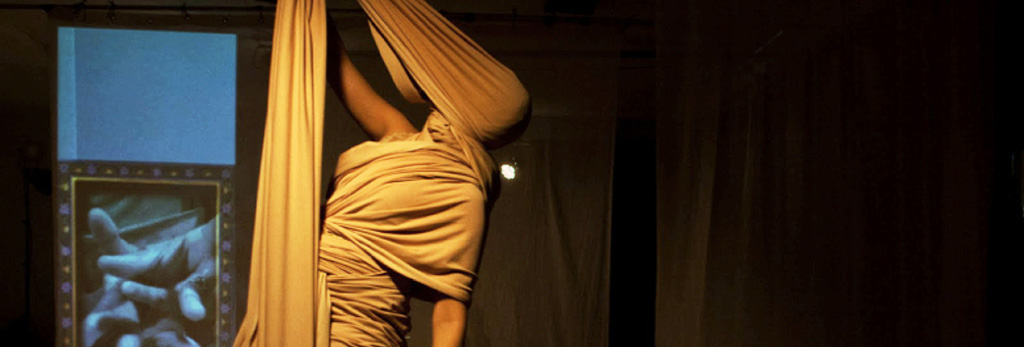
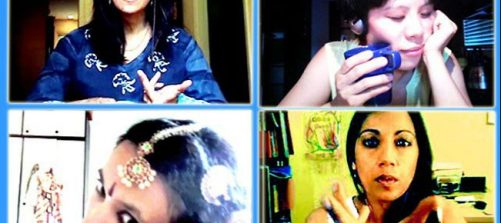
![Video: ]wrist[](https://www.p-art-icipate.net/wp-content/uploads/2012/10/02_wrist-501x223.jpg)
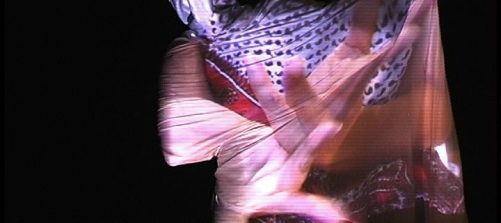
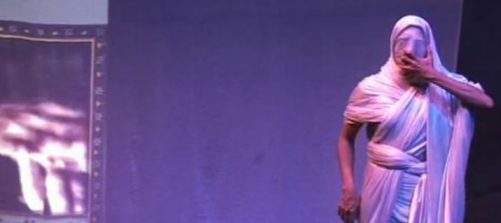
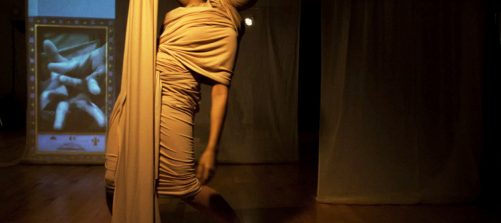
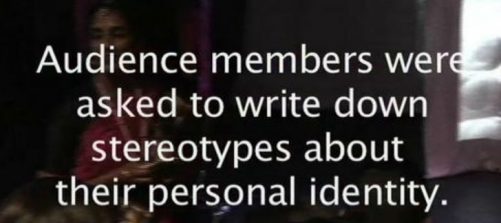
 Artikel drucken
Artikel drucken Literaturverzeichnis
Literaturverzeichnis